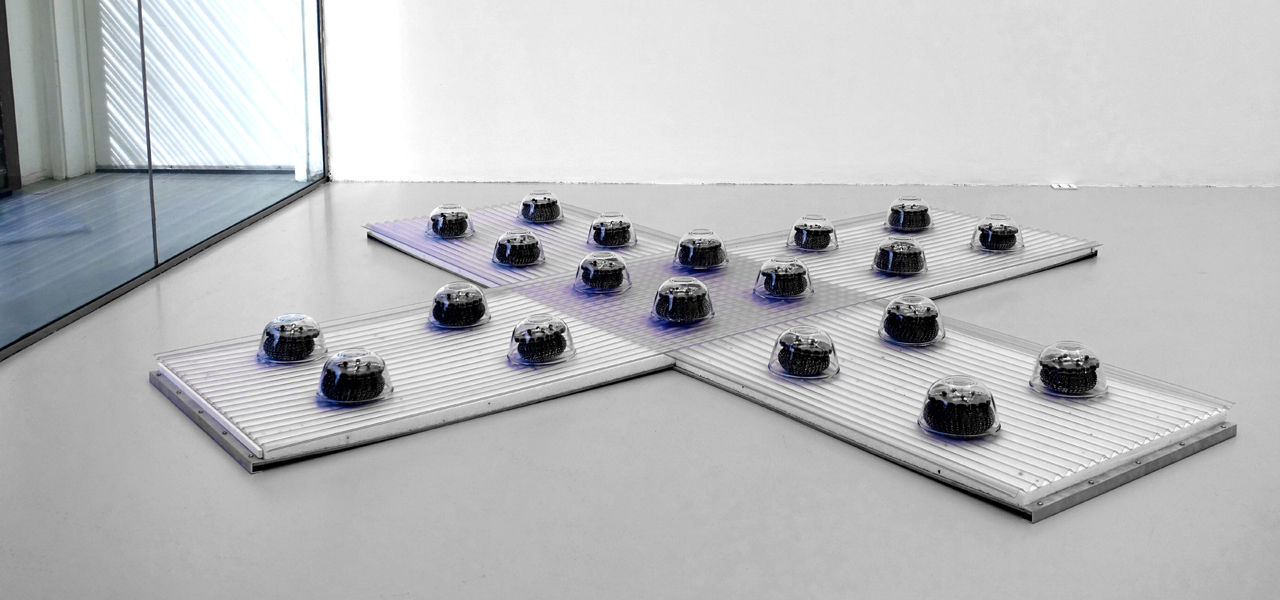
'Particulate Aether Detector' Roofing sheet, insulating board, plywood, steel, pan scourers, basalt, silver beads, pyrex. Periastra, APT Gallery, London. February 2022.

This artwork represents an imaginative model for a particulate aether detector. It is similar in design to the DUNE facility at FermiLab or the Super Kamiokande in Japan, excepting that these are used for observing neutrinos.
In this instance, the detector is designed to detect the flow of particulate aether in the form of photons with base level spin.
It is this field which under-pins the mechanics of electro-magnetism and other natural phenomena.
In this artwork the beads located along the arms of the detector are in monochrome. Where the waveforms intersect they change to iridescent colours.
‘Particulate Aether’ is manifest at its base level as infra-red photons. These will spin axially like the Earth, but can be spun up by edge collisions into more complex and extended forms of photon. This is interpreted as an increase in frequency and energy potential.
Eventually the cross-section of the photon becomes so large that it can no longer sustain the velocity c and becomes what we understand as matter; first as an electron and then, through a variety of unstable forms, to the proton.
One of the first theories that could be described as particulate aether was that of Descartes' Vortex theory. In this scenario planets and comets could be seen responding to aether as a fluid through which they traveled and which influenced their motions and orbits.